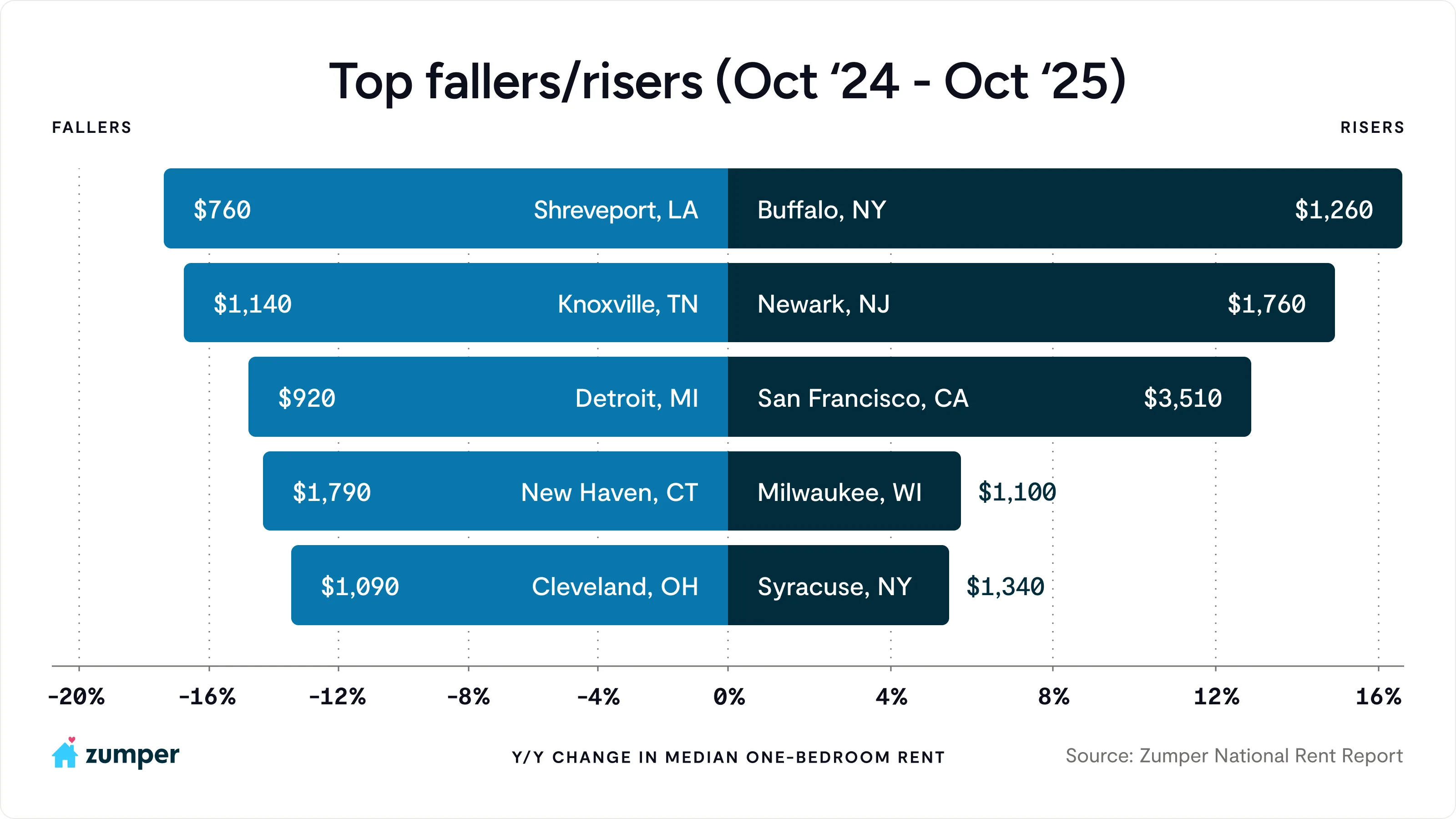Notable Trends
- Zumper’s National Rent Index showed the fourth straight month of flat or declining rates across the board: one-bedroom median rent decreased 0.4% this month to $1,511, while two-bedrooms fell 0.3% to $1,888. On an annual basis, one and two-bedroom prices are down 1.5% and 1.2%, respectively.
- San Francisco two-bedroom rent is up 17.6%, the steepest annual increase nationwide and the highest recorded in the city since Zumper began tracking rents a decade ago.
- New York City rents declined both monthly and annually for the first time since spring 2021, driven by falling prices in The Bronx and Brooklyn.
- Los Angeles marked its fifth consecutive month of annual rent decreases, with two-bedrooms down 9.9% amid a surge of new inventory.
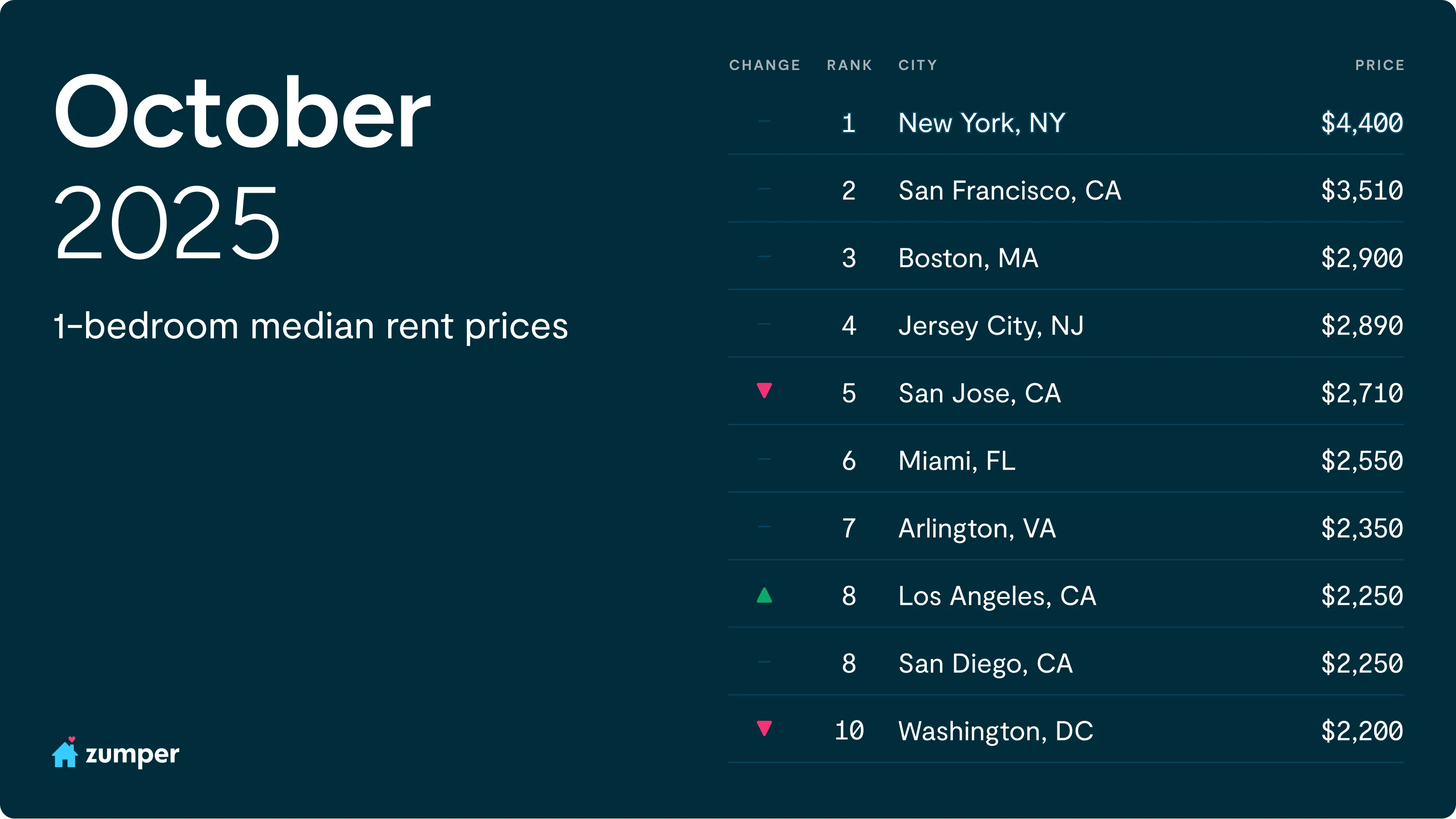
San Francisco two-bedroom rent is up 17.6% year-over-year, marking not only the sharpest increase in the nation this month but also the highest annual growth rate the city has seen since Zumper began tracking rents about a decade ago. Meanwhile, both D.C. and Arlington have recorded annual declines across one and two-bedroom units. The pullback may reflect the growing uncertainty in the local economy following federal job cuts and the recent government shutdown.
National rent prices soften for the 4th month in a row
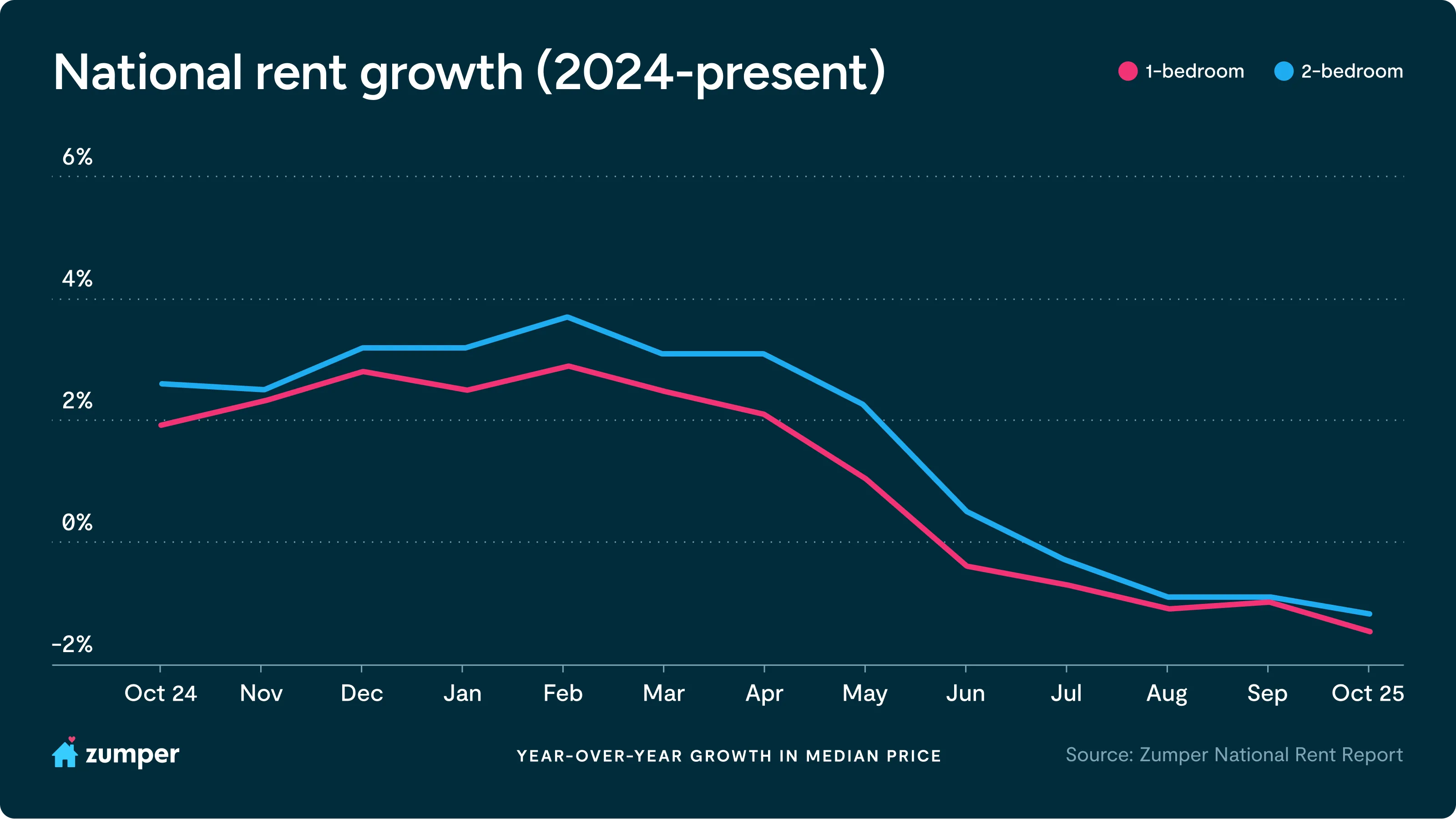
The U.S. rental market continued its cooling trend in October, marking the fourth straight month of flat or declining rent prices. Zumper’s National Rent Index showed that the one-bedroom median rent decreased 0.4% month-over-month to $1,511, while two-bedrooms fell 0.3% to $1,888. On an annual basis, one-bedroom rent dipped 1.5%, while two-bedrooms dropped 1.2%.
While historic supply levels remain a major driver of the softening national rent prices, the rental market is also contending with headwinds from the broader economy. Job growth has slowed, consumer sentiment remains depressed, and unemployment may be higher than official figures suggest. These macroeconomic factors are contributing to more conservative renter behavior, with many choosing to renew their current leases rather than move, keeping retention rates elevated. If weak consumer confidence and soft labor market conditions persist, they could delay the market’s eventual rebound.
For renters, the current environment represents a rare opportunity to negotiate favorable lease terms and explore upgraded living situations. For property owners, navigating this supply-heavy landscape will require strategic pricing, creative concessions, and patience as the market works through this current high inventory state.
“With the rental market now entering the seasonally slower months, a clearer picture of the sector’s trajectory may not emerge until the spring leasing season begins,” said Zumper CEO Anthemos Georgiades. “Until then, the interplay between abundant supply, cautious consumer behavior, and economic uncertainty will continue to define market conditions.”
The most recent CPI data revealed that the shelter index is up 3.6% since last September. To dive deeper into how Zumper’s national rent data provides insights to where the CPI is heading, please go to our blog post: https://www.zumper.com/blog/zumper-consumer-price-index/
NYC rents decline across the board for the first time since spring 2021
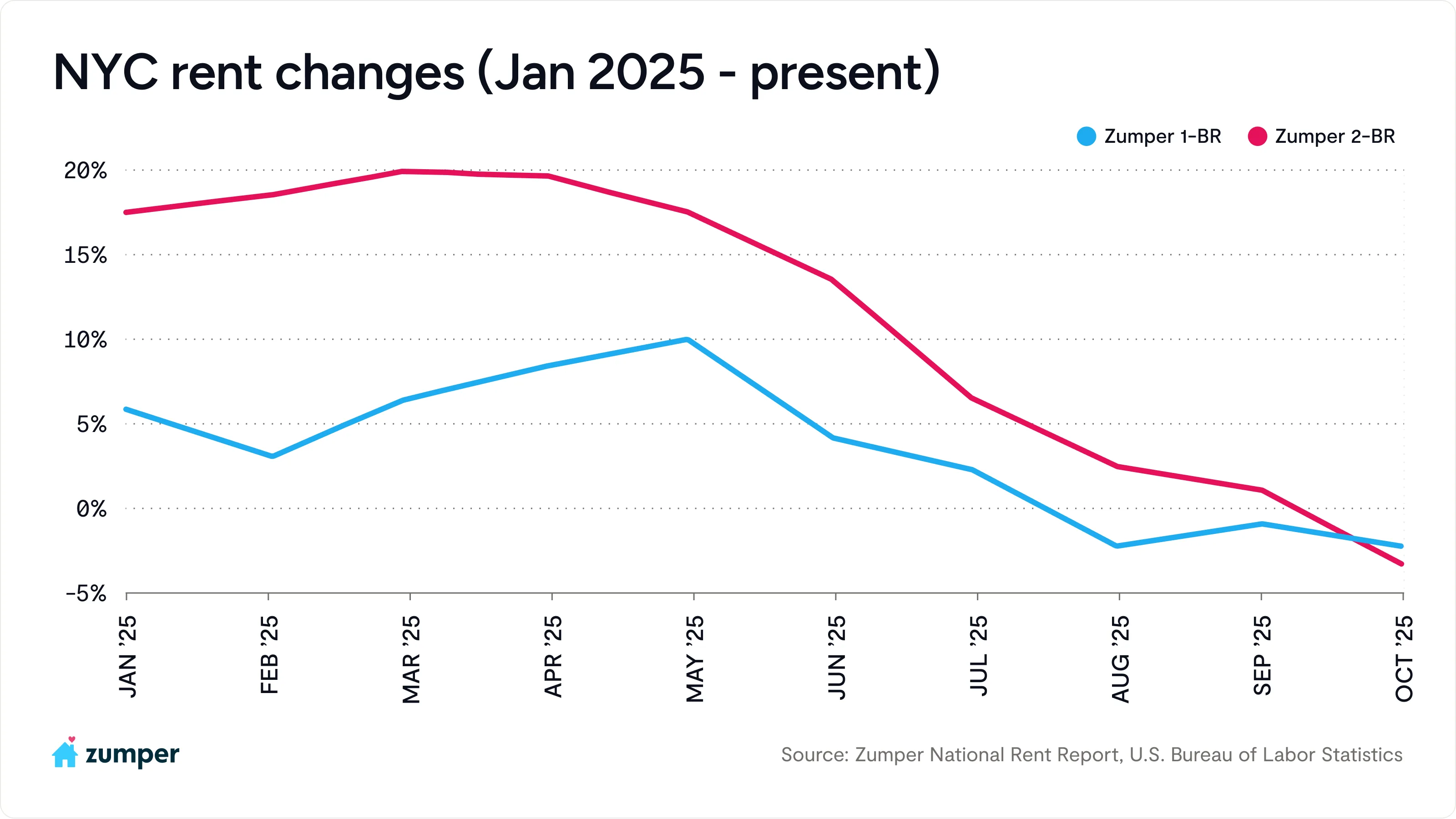
New York City rents trended downward this month, with one-bedrooms decreasing 1.3% to $4,400, while two-bedrooms fell 3.3% to $5,200. On an annual basis, one and two-bedroom rents are now 2.2% and 6.3% lower, respectively, marking the first time since spring 2021 that prices have declined across the board. This slowdown is likely being driven by a combination of seasonal softness and rising inventory. With more than 25,000 new units expected to be completed over the next 12 months, new supply is arriving as the market enters its traditionally slower leasing season.
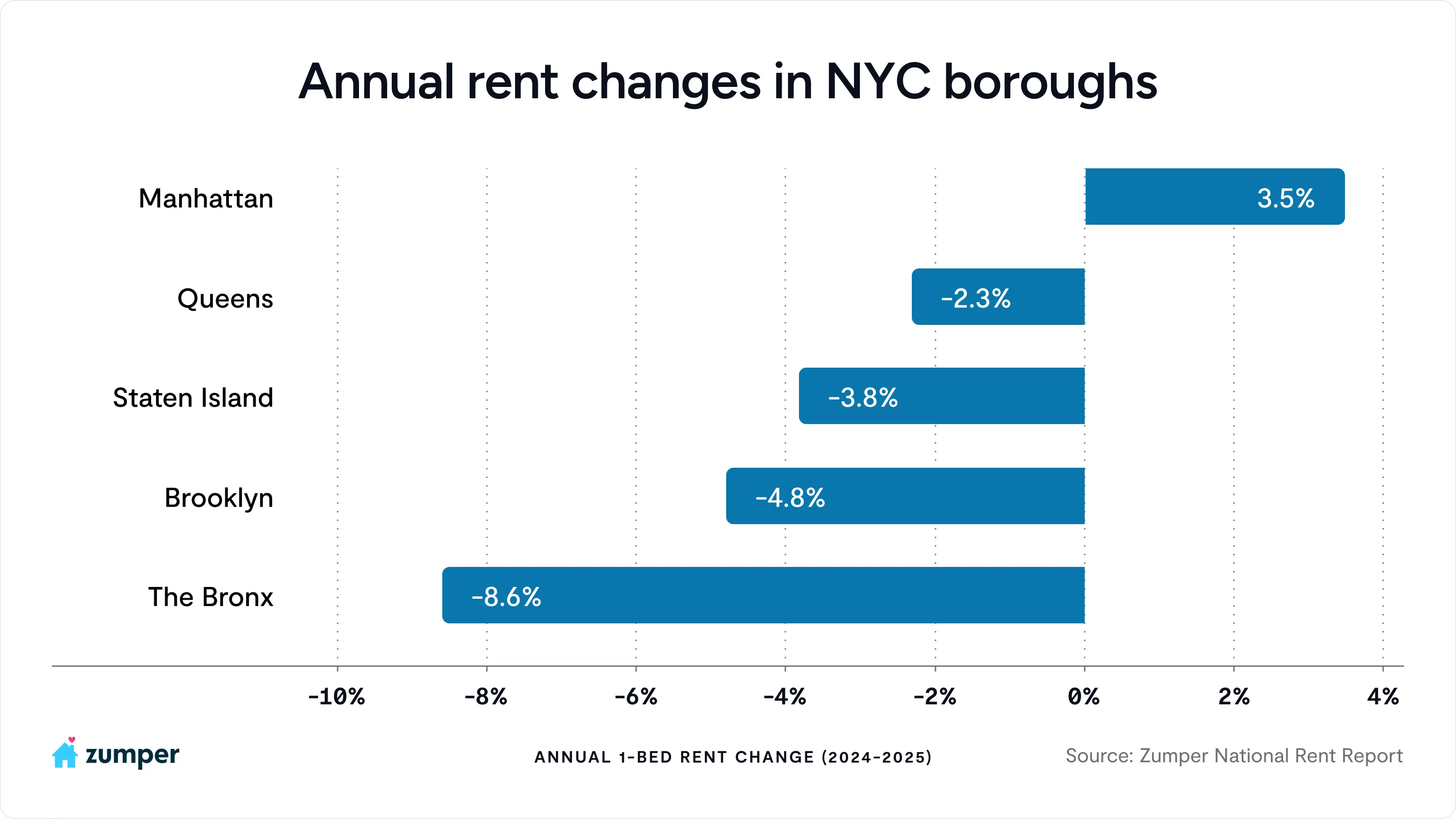
At the borough level, four of the five boroughs recorded annual rent declines. The Bronx and Brooklyn, which led the city in multifamily permitting activity this year, are driving much of the downward pressure as new construction comes online, with rents down 8.6% and 4.8%, respectively. Manhattan was the lone exception, with rent rising 3.5% year-over-year.
Rents in Southern California markets fall as new supply surges
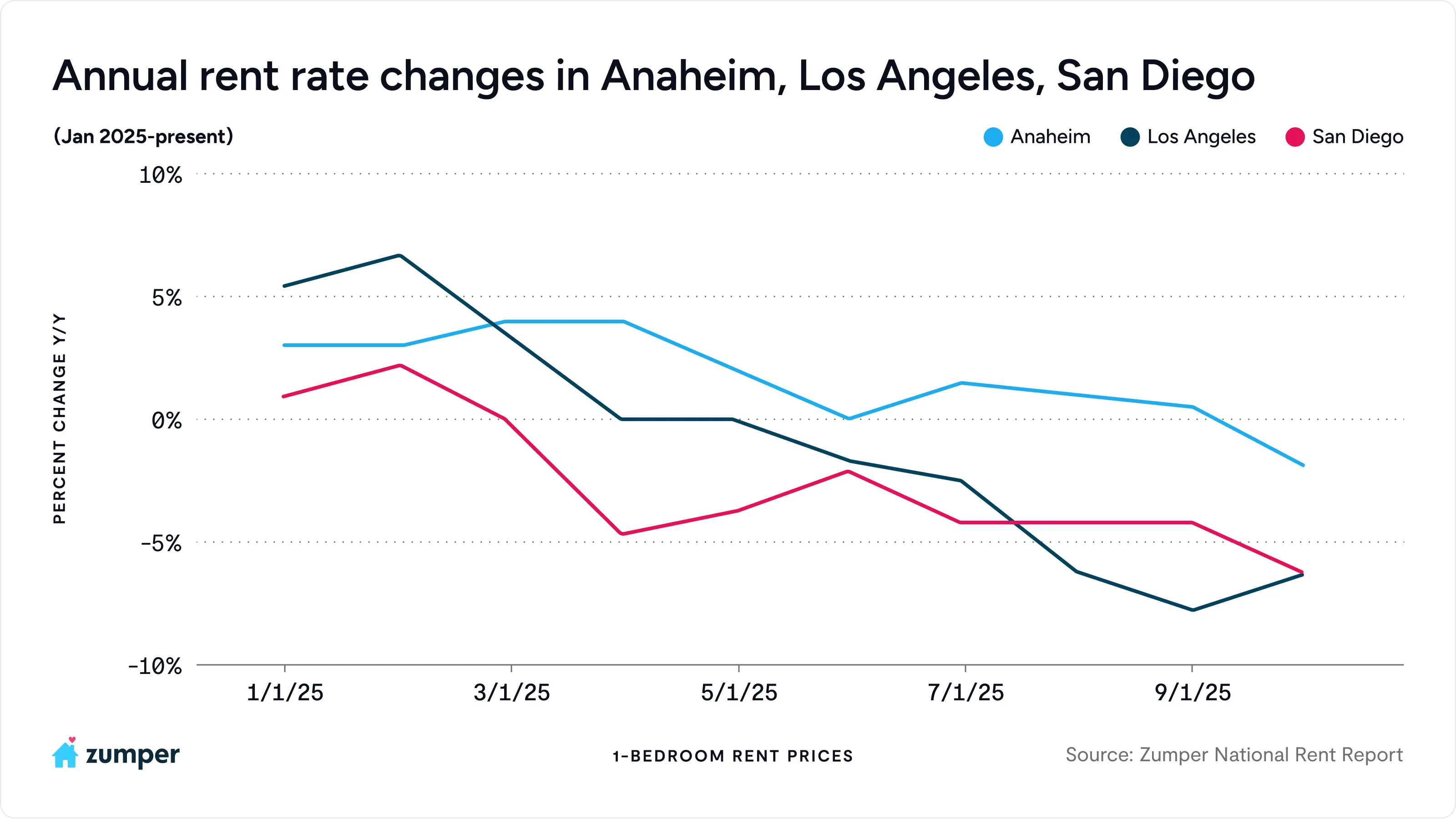
Los Angeles rents continued to soften in October, marking the fifth consecutive month of annual rent price declines for both bedroom types. One-bedroom rent has fallen 6.3% year-over-year to $2,250, while two-bedroom rents have dropped 9.9% to $3,100. Los Angeles is currently experiencing a 93.7% annual increase in supply, with delivery volumes not expected to peak until mid-2026, suggesting that more rent declines are ahead.
Other Southern California markets are also facing supply surges. San Diego and Anaheim are among the few markets nationwide where deliveries are accelerating rather than moderating, with supply volumes expected to grow more than 70% in each market over the next 12 months, a dramatic shift for these cities that have seen historically constrained construction activity. The impact is already visible in the rent data. San Diego one-bedroom rent has declined 6.3% annually, while two-bedrooms are down 4.8%. In Anaheim, one-bedroom rent has decreased 1.9% year-over-year and two-bedrooms have fallen 3.0%. These markets appear poised to follow Los Angeles’ trajectory of sustained rent declines through 2026.
